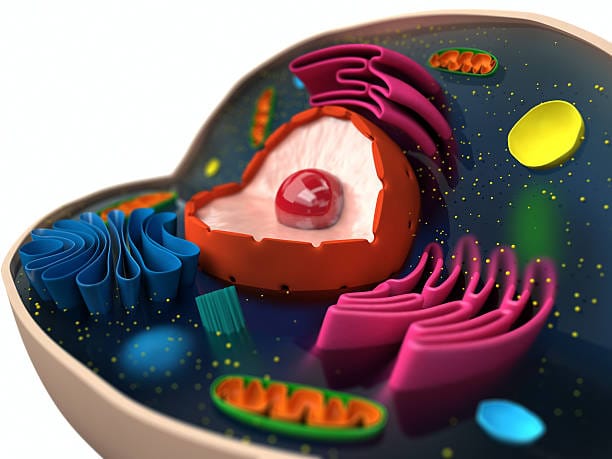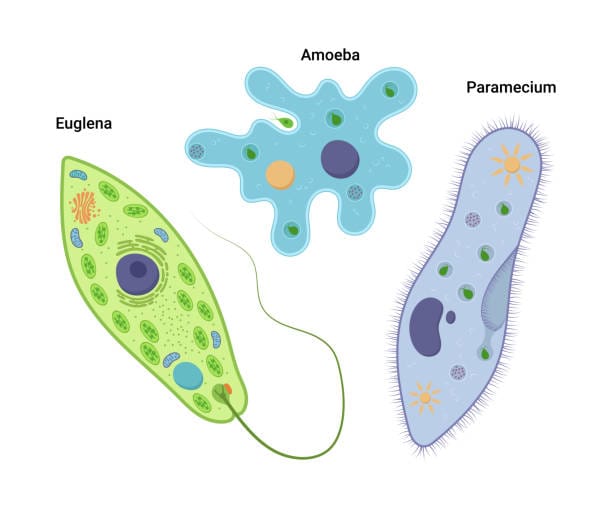Beneath the surface of every living thing lies a world teeming with intricate systems and microscopic machinery. At the very core of this cellular world resides an enigmatic structure—the nucleus. In its stillness, it appears unimposing, just one of many organelles nestled within the cell. But its true importance defies its simplicity. The nucleus is not just another part of the cell; it is its command center, its brain, and the very vault that safeguards life’s instructions.
The story of the nucleus is the story of life itself. It is the quiet overseer of our genetic legacy, the architect of identity, the regulator of cell behavior. From the first single-celled organisms that floated in primordial seas to the complex multicellular beings that now populate the Earth, the nucleus has remained a consistent and vital guardian of continuity and order.
To understand life, evolution, disease, and inheritance, one must first understand the nucleus—its structure, function, mysteries, and immense significance.
A Discovery That Changed Biology
It wasn’t until the advent of better microscopes in the 17th and 18th centuries that scientists began to unravel the complexity within cells. Robert Brown, a Scottish botanist, is credited with identifying the nucleus in 1831 while examining orchid cells. He observed a dense, rounded body inside each cell and coined the term “nucleus,” meaning “kernel” or “nut.” At first, its purpose remained unclear, but its consistent presence hinted at something essential.
Decades later, with the rise of genetics and the discovery of DNA, the true role of the nucleus came into focus. Scientists realized that it was not merely a structural feature—it was the repository of the cell’s genetic material and the conductor of cellular function. By housing and protecting DNA, the nucleus allowed for the regulated expression of genes, the precise coordination of cell division, and the inheritance of traits across generations.
The nucleus was no longer just an internal blob. It had become the very seat of life’s instructions.
DNA: The Blueprint of Existence
At the heart of the nucleus lies DNA, or deoxyribonucleic acid—a molecule of such elegance and power that it has come to symbolize life itself. Composed of four basic nucleotides (adenine, thymine, cytosine, and guanine), arranged in long double helices, DNA encodes all the instructions a cell needs to build and maintain a living organism.
Inside the nucleus, DNA is wrapped around proteins called histones, forming structures known as chromatin. This allows the enormously long DNA molecules—sometimes stretching meters in length when unwound—to fit inside a microscopic nucleus. During certain phases of the cell cycle, this chromatin condenses further into recognizable structures called chromosomes.
The organization of DNA within the nucleus is not random. Certain genes are more accessible at certain times, depending on the needs of the cell. Some regions are tightly packed and inactive (heterochromatin), while others are loosely packed and actively being transcribed (euchromatin). This spatial choreography determines which proteins are made, which functions are performed, and how the cell responds to its environment.
The nucleus is thus not only a storage unit for DNA, but a dynamic, responsive environment where the blueprint of life is actively read, edited, and interpreted.
Nuclear Envelope: A Fortress with Selective Gates
The nucleus is surrounded by a double membrane called the nuclear envelope. This envelope is more than a mere barrier; it is a highly selective gateway that regulates the movement of molecules in and out of the nucleus.
The outer membrane of the nuclear envelope is continuous with the rough endoplasmic reticulum, studded with ribosomes and involved in protein synthesis. The inner membrane provides structural support, anchoring chromatin and nuclear lamins—fibrous proteins that maintain the nucleus’s shape.
Embedded within the envelope are nuclear pores—large protein complexes that function like security checkpoints. Each pore is a tunnel allowing specific molecules to pass through. Messenger RNA (mRNA), synthesized in the nucleus, exits through these pores to reach ribosomes in the cytoplasm, where it is translated into proteins. Proteins needed inside the nucleus, such as transcription factors or histones, are imported in the opposite direction.
This two-way traffic is tightly regulated. It ensures that the cell can respond swiftly to changes—activating genes in times of stress, suppressing others during rest—without compromising the integrity of its genetic material.
The Nucleolus: Factory Within the Fortress
Within the nucleus lies another specialized structure: the nucleolus. Often appearing as a dark, dense spot under the microscope, the nucleolus is a hub of activity focused on one essential task: making ribosomes.
Ribosomes are the molecular machines that synthesize proteins. But before they can function, they must be assembled—piece by piece—within the nucleolus. Here, DNA sequences known as ribosomal DNA (rDNA) are transcribed into ribosomal RNA (rRNA). These rRNA strands are then combined with ribosomal proteins (imported from the cytoplasm) to form the subunits of ribosomes.
Once completed, these subunits exit the nucleus through the pores and come together in the cytoplasm to form functioning ribosomes. Without the nucleolus, protein production would grind to a halt—and with it, all cellular life.
Beyond ribosome production, the nucleolus also plays roles in stress responses, aging, and even viral infection. It is a reminder that even within the center of the cell’s control center, specialized tasks and microcosms exist.
Gene Expression: Decoding the DNA Symphony
The nucleus is where the abstract language of DNA is turned into actionable instructions. This process, known as gene expression, involves two main steps: transcription and translation.
During transcription, specific genes in the DNA are copied into messenger RNA (mRNA) by an enzyme called RNA polymerase. This mRNA carries the genetic message from the nucleus to the ribosomes, where proteins are assembled according to the sequence encoded in the mRNA.
This process is not passive. It is regulated by numerous factors—some proteins called transcription factors can activate or repress genes depending on the cell’s condition. Epigenetic modifications, such as methylation of DNA or modification of histone proteins, can permanently or temporarily silence certain genes. These modifications do not change the DNA sequence itself, but they influence how and when it is used.
Thus, the nucleus does not simply hold the genetic code; it actively manages its expression, allowing each cell type—whether muscle, nerve, or blood—to use the same DNA in entirely different ways. This is how a single fertilized egg, carrying a single genome, can develop into the astonishing variety of cells in the human body.
Cell Division: The Nucleus at the Center of Reproduction
The nucleus also plays a central role in cell division, a process crucial for growth, repair, and reproduction. Depending on the context, this division may take one of two forms: mitosis or meiosis.
In mitosis, a single cell divides to produce two identical daughter cells, each with a full set of chromosomes. Before division, the DNA is replicated, and the nucleus carefully packages it into condensed chromosomes. Structures called the mitotic spindle help ensure that each daughter cell receives an exact copy of the genetic material.
In meiosis, used for producing eggs and sperm, the nucleus undergoes a more complex process of division that results in cells with half the normal number of chromosomes. This reduction is necessary for sexual reproduction, so that when two gametes fuse, the resulting zygote has a complete set of chromosomes.
The nucleus choreographs these events with astonishing precision. Any errors—such as nondisjunction, where chromosomes fail to separate properly—can result in genetic disorders like Down syndrome. Such consequences highlight the fragility and importance of nuclear control during division.
The Nucleus and Disease: When Command Fails
Because the nucleus holds the instructions for life, any damage to its structure or contents can have devastating consequences. Mutations in DNA, whether inherited or acquired, can disrupt normal gene function and lead to diseases.
Cancer is one of the most well-known examples. It often arises when mutations affect genes that regulate the cell cycle, leading to uncontrolled division. In many cancers, the architecture of the nucleus changes, and certain nuclear proteins behave abnormally. This makes the nucleus not just a passive witness to disease, but an active player in its development.
Other diseases are caused by mutations in nuclear envelope proteins, such as in Hutchinson-Gilford progeria syndrome—a rare genetic disorder characterized by accelerated aging. Patients with this condition have defects in the lamin A protein, which provides structural support to the nucleus. As a result, their cells age rapidly and function poorly.
Neurodegenerative diseases like Huntington’s and certain forms of muscular dystrophy also have nuclear roots. These disorders often involve misregulated gene expression or the accumulation of toxic proteins within the nucleus.
Studying the nucleus allows scientists to not only diagnose these diseases but also search for treatments that can correct or mitigate the underlying problems.
Evolution of the Nucleus: A Leap Toward Complexity
The nucleus is a defining feature of eukaryotic cells—those with complex internal structures, such as plants, animals, fungi, and protists. Prokaryotic cells, like bacteria and archaea, lack a nucleus. So where did the nucleus come from?
The origin of the nucleus remains one of biology’s most intriguing mysteries. One prevailing theory is that the nucleus evolved from a symbiotic relationship between primitive cells. According to the endosymbiotic theory, an ancestral prokaryote may have engulfed another smaller cell, and instead of digesting it, a cooperative relationship formed. This process may have eventually given rise to internal compartments, including the nucleus.
Another theory suggests that internal membranes began to fold around DNA to protect it from reactive molecules in the cytoplasm. Over time, these folds could have evolved into a fully enclosed envelope, giving rise to the nucleus.
Whatever its origin, the emergence of the nucleus was a monumental step in evolution. It allowed for more complex regulation of gene expression, the development of multicellular life, and the explosion of biodiversity we see today.
The Nucleus in Research and Biotechnology
Modern science relies heavily on the nucleus for advancements in medicine, agriculture, and genetics. Techniques like gene editing (CRISPR), cloning, and genetic testing all revolve around manipulating nuclear DNA.
Gene therapy, for example, involves inserting corrective genes into the nucleus to replace faulty ones. Cancer treatments increasingly target specific nuclear pathways or use immunotherapy to train the body to recognize cells with mutated nuclear DNA.
In developmental biology, researchers use nuclear transfer techniques to clone animals—a process that involves replacing the nucleus of an egg with one from a donor cell. This technique famously led to the cloning of Dolly the sheep in 1996.
In synthetic biology, scientists are even experimenting with building artificial nuclei or modifying nuclear functions to create cells with new capabilities. These advances are pushing the boundaries of what life is—and what it might become.
The Nucleus and the Future of Life
As we look to the future, the nucleus remains central to many of our most profound questions. Can we cure genetic diseases by editing the nucleus’s contents? Can we regenerate tissues by reprogramming nuclei? Can we grow organs in the lab? Can we extend life by protecting or repairing nuclear DNA?
The answers lie in a deeper understanding of the nucleus—not just its mechanics, but its delicate balance of control, cooperation, and adaptation. It is more than a static container of genes. It is a responsive, evolving system that integrates signals, makes decisions, and guides the fate of the cell.
In the coming decades, as science continues to decode its secrets, the nucleus may offer solutions to some of humanity’s most pressing challenges—from health and longevity to sustainability and space travel.
A Silent Sovereign
The nucleus may be microscopic, but its influence is vast. It is the master architect behind every heartbeat, every thought, every step. It orchestrates the development of an embryo, the healing of a wound, the learning of a song. Though it works in silence, tucked away from view, its impact resounds through every living moment.
To marvel at the nucleus is to marvel at life itself—its complexity, its fragility, and its power. In the nucleus, nature has placed its most treasured blueprint. And in studying the nucleus, humanity continues its timeless quest to understand who we are, how we came to be, and what it means to be alive.






